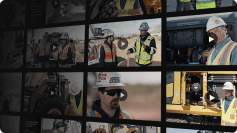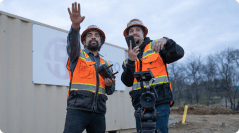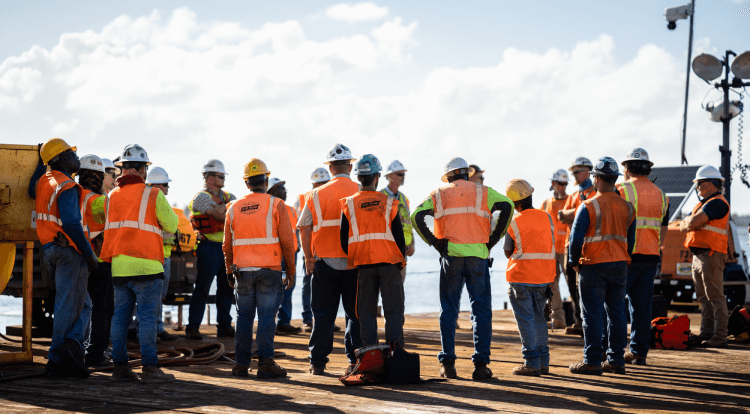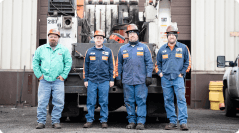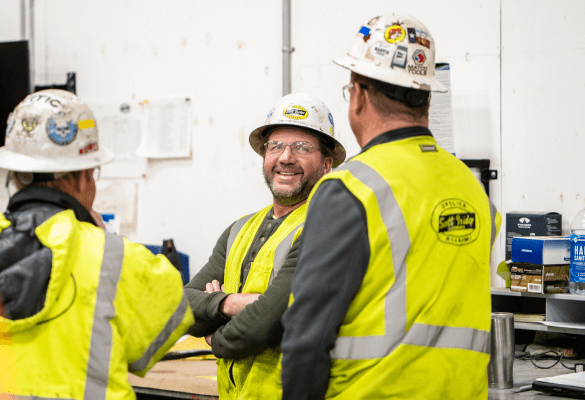Laws of Combat: Decentralized Command
Written by Jocko Willink
December 30, 2021
The concept of decentralized command is crucial to the survival of military troops, but it has some powerful implications for Dirt World leaders, too. So, what is decentralized command?
Here’s how former Navy SEAL Jocko Willink defines it:
“Decentralized command simply means that everybody leads. That’s what you want as a leader. Not just for everybody on the team to be able to lead, but for everybody on the team to be actually leading. It’s often counterintuitive, but it’s also extremely powerful.”
Hold up—couldn’t that degenerate into everyone on your team "leading" in their own direction? Isn't this counterintuitive and counterproductive?
“Absolutely, that can happen,” Jocko agrees.
At least, it can happen if you apply the principles of decentralized command incorrectly. But do it right, and decentralized command will give your crew members the responsibility they crave (yes, they really do want responsibility) and free up more of your time to focus on growing your business.1
To start applying decentralized command, use these four principles.
1. Lead with the minimum required force
This one might sound pretty straightforward. But what does "minimum force" mean in the Dirt World?
According to Jocko, it means, "Nothing. Zero. That's the minimum force required for a leader. The only thing you're doing is going out there and saying, 'Execute, execute, execute.'"
Such minimal force is a mark of success for Dirt World leaders. Why?
“Because it means everyone on the team understands what the mission is. It means they understand what their jobs are and what they need to do to accomplish it. They’re ready to go out there and execute,” Jocko explains.
And as the old saying goes, "The less you talk, the more people listen." You want your crew to hear your instructions and carry them out—without you nagging, bribing, or coercing them to do it.
2. Train people to take your job
Decentralized command is often counterintuitive. So when Jocko says to train people to take your job, he means it . . . just not the way you might think.
You're not training people to take over so you get forced out of the business. You're training them to take over the tasks of your job that are burning up all your creative energy and your ability to see the big picture.
Here's how Jocko puts it: “When subordinate leadership is actually making things happen, it means I no longer have to sit there and look over their shoulders all the time, so guess what I'm doing? I'm looking up and out to see where we can go next. I'm looking at safety from a high level. I’m looking at how we can coordinate other projects.”
Your subordinate leaders can only reach that level of decentralized command through proper leadership training. That's how you empower your project managers and field supervisors with the knowledge they need to stand up and lead well.
3. Put guardrails in place
What’s the difference between empowering your people and setting them up for failure? Guardrails.
“If someone on your team has never done this type of project before, you can’t just throw it at them and expect them to get it right. You have to give them some guidance and a plan. But you should also give them a little bit of leeway and allow them to brush up against the guardrails of failure,” Jocko says.
So, what do those guardrails look like?
They could be as simple as asking questions during your regular morning meetings.
Jocko gives this example: “I’ll go to a guy and say, ‘Hey Aaron, are you sure you want to pour concrete on this day?’ And he’ll say, ‘Well, yeah, I'm pretty sure.’ And I’ll say, ‘Well, you know, your rebar isn't showing up until X date, so that gives you a pretty tight window of time to get all that rebar put in.’ And he’ll say, ‘Oh, you’re right, that is a tight timeline!’ And I’ll say, ‘Yeah, I know, but you can do what you think is best.’ And he’ll say, ‘No, you know what? I'm gonna move it back to the next morning.’”
See what Jocko does there? He asks some questions, using the minimum required force. And Aaron realizes his error, makes adjustments, and learns a better way to get it done going forward.
That said, there's one big caveat: Guardrails and letting your crew make their own choices are great unless there are safety risks, major costs, or damage to your relationship with your client. If any of those things are about to happen, you can (and should) take back the controls—for obvious reasons.
4. Take care of your people, and your people will take care of you
“If you take care of your gear, your gear will take care of you” is a gospel truth among Navy SEALS like Jocko. And the same is true in the Dirt World.
You take care of your gear as a safety protocol. But it's also a good way of thinking about people.
"The more I let my team take ownership of the plan and the more I invest in them, the better that plan is going to get executed, and the safer it’s going to be executed, too," Jocko says.
He adds, “If you invest in people, train them, and give them opportunities to succeed and grow, then they’re going to understand why they're doing what they’re doing. And then they can make decisions and adjustments. When your team really understands the ‘why’ behind the right decisions, that's what decentralized command is.”
Takeaways
To sum it all up, you want to
- Lead with minimum required force
- Train people to take your job
- Put guardrails in place
- Take care of your people
Do those things and pretty soon you'll be spending more time breaking ground on new projects—and less time breaking a sweat over how they get done.
Want some help getting started? Find out how BuildWitt Training can help you make decentralized command a reality in your business.
←Read Laws of Combat: Prioritize and Execute
Read Why Safety Must Come First →


